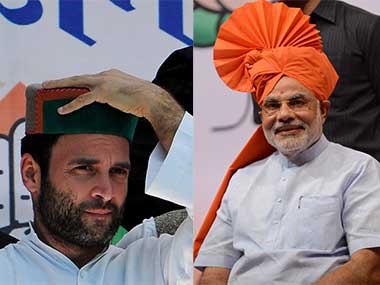New Delhi: Exporters have been facing tough times since the Goods and Services Tax (GST) regime came into being since their refunds were stuck with tax authorities, making funding or liquidity a huge issue. GST woes have had a dampening effect on many sectors but perhaps the deepest cut has been seen on India’s exports, and here too, the brunt has been borne by micro and small enterprises. According to latest data released by the government, trade deficit in October widened sharply to $14 billion from $9 billion in September this year and $11.13 billion in October 2016, because of weaker exports and simultaneous increase in oil and gold imports.
A sharp fall in export of items such as readymade garments, gems and jewellery and leather products has resulted in a 1.2 percent year on year decline in exports of merchandise in October to $23.09 billion. This is the first such decline in almost 13 months when merchandise exports were surging. In October, imports increased 7.6 percent to $37.11 billion. This decline in exports and continued increase in imports lead to the widening of the trade deficit.
In this backdrop, a mid-term review of the Foreign Trade Policy which was announced on Tuesday could spell some relief for harried exporters. Perhaps the single biggest assurance which exporters will cherish came from the Revenue Secretary Hasmukh Adhia, who said the procedure for processing refunds to exporters has started, the government has about 10,000 applications to process and the procedure will be expedited.
This piece in Hindu lists the highlights of the new document. These include
1) New incentives valued at Rs 8,000 crore with focus on micro and small enterprises, labour intensive sectors
2) Self-certification scheme for duty-free imports
3) A 2 percent increase each in incentive rates of the Merchandise Exports from India Scheme and Services Export from India Scheme.
4) A new trade data analytics division under the Directorate General of Foreign Trade will analyse real time data to help fine tune policy.
And as this piece in Financial Express explains, the government has rolled out an e-wallet plan for exporters under GST from 1 April. The exporters will avail refunds after correct returns are filed. The government has disbursed Rs 451 crore in refunds for exporters and issued GST notifications to address working capital concerns of exporters.
Remember, liquidity crunch was the biggest hurdle for exporters. Ajay Sahai, Director General and CEO of the Federation of Indian Export Organisations (FIEO), had said earlier that acute problems of refunds under GST have lead to unprecedented decline in exports. Faced with severe cash crunch, micro and small export firms had stopped taking fresh export orders. Sahai had estimated earlier that in four months since July when GST came into effect, “about Rs 40,000-50,000 crore” has been pending with the government in the form of GST refunds. He had said the government has technical plus legal issues with the GST system, saying some parts of the GST regime are under dispute while some others have legal issues as far as refunds to exporters are concerned.
But after the mid-term review was unveiled on Tuesday, Sahai said that a lot has been done to mitigate the woes of exporters as maximum support has been offered to labour intensive exporters, the section which was impacted the most due to funds crunch in the last few months. “The government will be now relying on declarations from exporters. It has also extended the validity to 18-24 months so exporters can use this extension for long periods. Duty free exports from samples have been liberalised. The situation has definitely improved, exporters have been able to file claims. Now refunds will have to flow from central and state tax authorities".
Sahai also said the exporters had been assured by the Commerce Secretary that continuous review of the policy will be done to hand hold them further.
Ratings agency Crisil said in a note to clients earlier this week that it is disquieting that India’s export growth is decelerating at a time when the global environment is becoming more conducive for trade. The International Monetary Fund (IMF) expects global growth to rise to 3.6 percent in 2017 from 3.2 percent in 2016. Global merchandise trade is seen growing stronger at 4.2 percent, boosting trade intensity of growth for the first time in six years. India has not been able to take as much advantage of stronger trade growth as many of its Asian peers. While India’s export growth is 9.5 percent in this fiscal so far, for Vietnam, South Korea, and Indonesia it was way higher at 23.8 percent, 18.4 percent and 17.8 percent respectively. In other words, our peers are expanding their export basket but due to our internal taxation issues, India has remained on the cusp of the export curve.
Crisil further said that improving global growth and stable rupee suggest that domestic developments might have had a greater role to play in the current export growth slowdown. The implementation of the Goods and Services Tax (GST) and associated glitches have had an impact, particularly on small and medium enterprises -- evident in low export growth in gems and jewellery, textiles and leather sectors. Incidentally these sectors are the most labour-intensive among the major export sectors. Significantly, export growth in labour-intensive sectors has been much lower than the overall export growth in this fiscal.
In value terms, the small and micro exporting industries comprise 40-45 percent of India’s total export basket whereas in volume terms, their share is even higher, which is why they have the most to lose from GST glitches.
India’s current account deficit (CAD) climbed to a four-year high of $14.3 billion in the first quarter of this fiscal, or 2.4 percent of gross domestic product (GDP). That compares with $0.4 billion, or 0.1 percent of GDP, in the same period last fiscal. The main reason for this is merchandise trade deficit ballooning to a four-year high of $41.7 billion ($19 billion). While export growth was 9.1 percent, import growth was way faster at 34.6 percent. On the other side, services trade surplus has remained stable. Goods trade deficit moderated to $32.2 billion, but remained higher than the $24.4 billion in the same quarter last fiscal.
Published Date: Dec 05, 2017 07:18 pm | Updated Date: Dec 05, 2017 07:31 pm


















